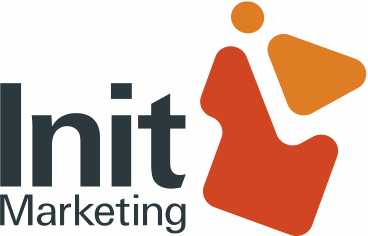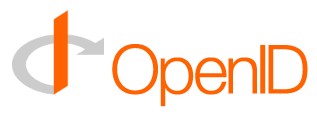The last Linux Foundation‘s installment in their Open Voices podcast series went live yesterday, featuring Mitchell Baker, chairperson of the Mozilla Foundation, interviewed by Jim Zemlin, the executive director of the Linux Foundation.
Mitchell raises some interesting points about challenges and opportunities met by Mozilla on its path to success, below an excerpt of the original transcript.
Jim asked Mitchell to describe the major turning points for Mozilla.
Some of the early turning points were in the 1999/2000/2001 time frame, like before Firefox, so before most people knew of us. And these were the turning points in which we actually came of age as an open source project. Meaning we shifted development control and management control from the remains of the Netscape group into a true open source project. And these are things like gaining control of the tree. Who determines who’s got access? Obviously in an open source project you have a set of technical criteria for who can access the source code, but when you come out of a commercial organization there’s this long tradition that all employees of that organization get access. And so these are very nitty-gritty development policies, but it took us a couple of years to figure out how to make that work, given this large commercial organization called Netscape. And those are not as glamorous as the success of Firefox, but they’re absolutely fundamental to having what is a legitimate open source project at the core of what we’re doing. So that was one set.
Commercial organizations willing to shape an open source future – like Nokia with its open source flavor of Symbian, just to make an example – have probably a lot to learn from that.
Success like Firefox stand on strong foundation(s).
And so in July of 2003, we formed the Mozilla Foundation. Up to that point we had had no legal organization at all. We were a virtual organization. And we’d gotten pretty far with that, but there were a lot of difficulties, right. You couldn’t own anything because there was no entity to own it. So you couldn’t own a machine or a trademark, a name like Mozilla, or you couldn’t have any money or a bank account or pay anybody, so it was really a big turning point to create that organization.
And then of course, Firefox. And probably shipping the 0.8 version of Firefox, which happened in the spring of 2004 was an important milestone; not as big as public as the 1.0 release, but it was really the 0.8 release, and I’ll bet any of the people—your listeners—may well have been using Firefox 0.8. It as at that release that we began to be clear we were on to something important.
Jim asked about the role of foundations, and advice for them.
I don’t think that every open source project needs or wants or would benefit from a foundation. But, certainly in our case, we found many things. There are some obvious ones like you’ve got a name. Do you want to own a name? Do you want to be able to protect it? You may or you may want to. Sometimes people would offer to donate money, and being able to have a set of people work full-time and be paid on it can be very helpful to open source projects. Again, it’s not for all open source projects, but for a number of us it’s an important piece. We found that other organizations were much more comfortable talking to us once e had a legal organization. So a government, for example, that’s interested in pen source software; it’s one thing to come to the Mozilla Foundation and talk to us. It’s another thing to come to a group of five or six people who call themselves Mozilla, don’t have an organization, and there’s a policy document maybe on the website, but you’re not really sure who it is. That’s a lot harder. [..]
I’m convinced that the nonprofit status makes people more comfortable in contributing their time and energy and work and effort, and knowing that what we do is legally dedicated to the public benefit. That may not be true of all open source projects, and I’m not trying to be proscriptive and say everyone needs to organize themselves this way, only that we have and I think it’s been important to our success.
At PLIO, the Italian association of volunteers who develop, support and promote OpenOffice.org, we are experiencing similar feedback from the market. Coping with Italian local public administrations or central ones seem easier now that we created a noprofit organization, and we can receive tax-deductible donations now (included the possibility to devolve the 8/1000 of taxes paid).
Talking about open source business models, the Mozilla finances come from the advertising model, but not the way it have been made real.
About the relationship with Google.
[..] the Google AdSense program existed, and Yahoo had similar options. So when you went to look at a website, you could already see that the websites would have ads on them and there was revenue to be shared. And so we though, “Well, we might as well have those discussions.†And we had them for months. Because it was clear pretty early on that there was some revenue relationship that could be had. We didn’t know amounts or numbers, but what spent months—and this is both Google and Yahoo—what took months was to get to know each other well enough to understand this principle that the revenue relationship would not result in technical decision-making about the product. [..]
And we can’t be united with that set if we let the technical decisions about our product move because of a business relationship. And so it’s really the power of the community behind us that makes that possible.
And we spent, as I say, months making sure we all understood this. And when
we were finally clear that that was the case, you know, we ended up with signed contracts, but with a relationship with each of Google and Yahoo.
Retaining full control over technical decisions was mandatory, the Firefox community wouldn’t have accepted it. About the business side, I agree that an interesting question would be whether or not search will continue to be lucrative in five or ten years from now. As a matter of fact this is definitely not just a Mozilla’s problem, though.
About the importance of the trademark.
I mean, we have had people tell us, you know, they want to rip out whole subsections of the code and replace them and call it Firefox. Those are the things that are very hard to reach agreement on. And I think that the trademark in general, or the name or the recognition that comes with a name is really a very different concept than free and open source software. [..]
But the name and the trademark, especially in the consumer setting is, how does a consumer who doesn’t understand the technology know what they’ve got? It’s all about understanding what you’ve got, not changing it. And so they’re very different concepts and in the open source world, you know, we haven’t figure out how to live easily within both of them.
Talking about trademark, Zemlin asked what Linux can learn from Firefox.
The first place I would start is that trademark is unsettled in this area. And so if, for example, the Linux desktop had a trademark that was treated like Firefox, there will clearly be parts of the Linux community that are extraordinarily upset and it will be highly divisive. I think you have to start there at one end of it. And so I’d be really cautious.
I am looking forward to ask some questions to Jim about Linux trademark and how and if to empower it in a similar way.
Read the full original transcript.
Technorati Tags: open source foundations, mozilla foundation, mitchellbaker, jimzemlin, google ads, open source business, commercial open source, business model, PLIO
 Focusing the camera on end-users by Pete Ashton
Focusing the camera on end-users by Pete Ashton
 A possible taxonomy by
A possible taxonomy by  Building Balance by
Building Balance by 




 OpenID logo by
OpenID logo by
Reply